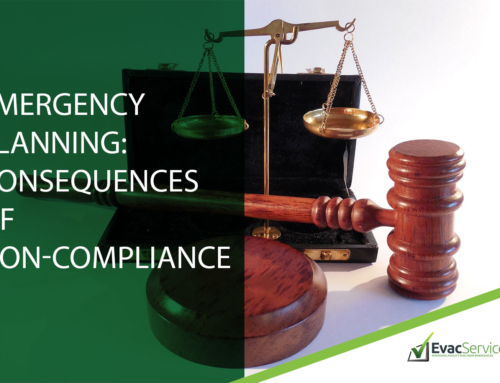When people’s lives are at stake, there’s no room for mistakes. This is especially true when it comes to creating a fire evacuation plan. A fire evacuation plan that’s haphazardly established could cause confusion, chaos, damage to properties, and death. It should be carefully thought through, tested, and communicated to ensure a higher chance of survival in times of emergencies.
Are you in the process of creating a Fire Evacuation Plan? Here are five mistakes you need to avoid.
Be clear on the roles and responsibilities of the Emergency Organisation (EO), such as who will assess the level of emergency, who will decide if it’s time to evacuate, and who will be the point-person in each area or floor. Make sure that your chain of command is properly communicated, so people will know who to turn to for help and information.
-
Skipping warden training
The warden plays a big responsibility in emergency situations. As such, you need to make sure that they are well-equipped to perform their duties.
Warden training covers relevant topics, such identifying fire hazards, monitoring risks, and assisting personnel and staff during the evacuation. With a trained and competent Emergency Organisation (EO), you, your occupants and staff, will have a higher chance of survival during emergencies.
-
Deprioritizing escape route plan and assembly point
A fire evacuation plan wouldn’t be successful if occupants and staff don’t know how to exit the facility during an emergency. Make sure that your floor plans are visible to tenants. Primary and secondary exit routes must also be accessible and passable.
Knowing exit routes is one thing, but where should occupants and staff go once they are out of your facility? Properly informing occupants about the assembly point – where they will gather once they have evacuated the building – reduces panic. This makes the evacuation safer and faster for everyone.
-
Leaving occupants and staff in the dark about the evacuation plan
Emergencies cause stress, but if people are not properly informed of what to do during these events, stress could lead to panic and chaos. Lack of communication could only make the situation turn for the worst.
With the sheer number of occupants in a facility, it is important to have systems in place to ensure a smooth flow of instructions. A fire evacuation plan, no matter how well designed, will be futile if not properly communicated to staff and occupants.
-
Creating a plan for the sake of compliance
Complying with the Australian Standards is important, but don’t forget that the main reason you’re planning for emergencies is to ensure the safety of the people in your care. While it is imperative for your organisation to meet your compliance obligations, it is even more critical to protect the lives of occupants and implement the emergency plan effectively
Let us help you avoid these fire evacuation planning mistakes!
Have peace of mind knowing that you can take care of your occupants in the face of any emergency. Complete the form below, and we’ll share some ideas on how you can improve your evacuation planning efforts.
[wpforms id=”1334″ title=”true”]








